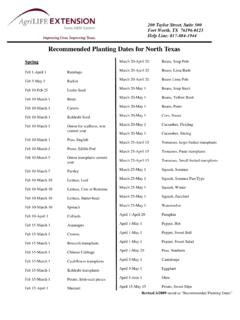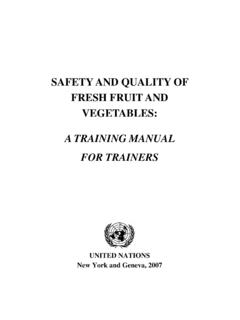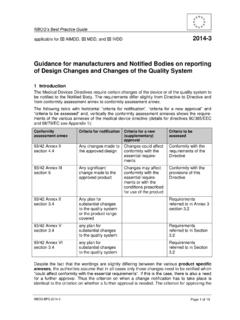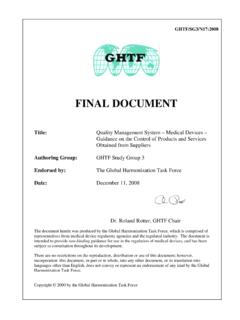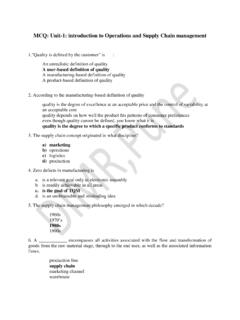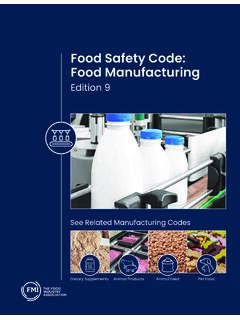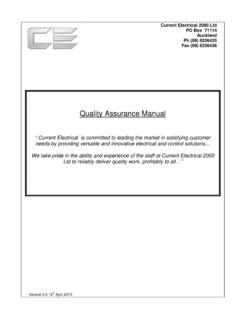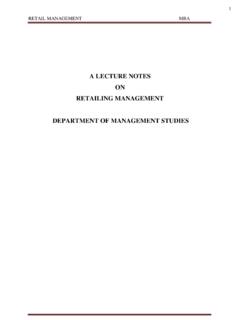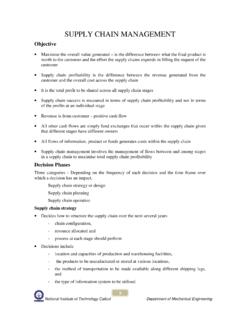Transcription of SWOT Analysis System of Vegetable and Fruit Industry …
1 Page 1 of 62 swot Analysis System of Vegetable and Fruit Industry and Texas A&M AgriLife Programs Daniel I. Leskovar Marco A. Palma Bhimanagouda S. Patil Parr Rosson Juan Landivar Monty Dozier Texas A&M AgriLife SCBS#: 418 September, 2013 ISBN 1-58161-418-7 Page 2 of 62 Table of Contents Executive Summary .. 3 Internal Analysis .. 3 External Analysis .. 5 The Texas Industry .. 8 Previous Case Study of the Texas Vegetable Industry .. 9 The swot Process and Methodology.
2 9 Internal Texas A&M AgriLife swot Analysis of Vegetable & Fruits .. 11 Focus Group Workshop - Uvalde .. 11 Focus Group Workshop College Station .. 11 Survey Results .. 12 External swot Process and Methodology .. 30 Focus Group Industry Workshop McAllen .. 30 Focus Group Industry Workshop Wintergarden .. 30 Focus Group Industry Workshop Lubbock .. 30 Focus Group Industry Workshop El Paso .. 31 Sample size .. 31 Methodology .. 31 Appendix A: Blank survey (external) .. 54 Page 3 of 62 Executive Summary Internal Analysis The Analysis of internal and external forces affecting the performance of Vegetable and Fruit (V&F) programs in the Texas A&M AgriLife Agency and the Texas V&F Industry is the first step for the development of a short- and long-term strategic planning.
3 Our competitive Texas AgriLife (herein internal ) agency strengths, weaknesses, opportunities and threats were formulated on the basis of a swot - Analysis . Two knowledge-based regional workshops were conducted and a consolidated internal survey was developed for research and extension faculty engaged in V&F programs in the Agency. The internal survey was a web-based survey and consisted of 13 questions, from which 4 were categorical (department affiliation, primary discipline, professorial rank and location of respondent); 3 were related to the level of activity on a scale of 1=none to 4=high (commodity, pre-harvest, post-harvest).
4 2 were related to top priorities rankings (number of times an area was ranked #1 or in the top 5), and 4 questions were related to the specific swot components on a scale 1=poor to 5=outstanding (strengths, weaknesses, opportunities and threats). A total of n=87 participants clicked the link to take the internal survey, with participation declining as respondents progressed through the survey. This could be an indication that the survey was either too long, having complex questions or simply that respondents were not familiar with the programs.
5 The number of participants who responded every single question was n=63. The number of respondent decreased from an initial high of n=79 (question #1) to n=63 (question #7). Considering that 39 participants participated in two regional informational workshops (Uvalde, Wintergarden and TAMU, College Station), the survey instrument was successful in identifying other personnel working in V&F programs. The number of completed responses (n=63) was high, with an equal distribution of on- and off-campus faculty (n=31, n=32, respectively).
6 The responses had also a good distribution of professorial ranks, with 41% professors, 25% associate professors, 17% assistant professors and 16% other. As expected, most respondents were from the Horticultural Sciences Department (27%), followed by Plant Pathology and Microbiology (21%), Entomology (14%), and Agricultural Economics (10%). Other Departments represented were 6%. The predominant discipline was production and crop physiology (18%), followed by entomology (15%) and plant pathology (14%).
7 There was also a good representation of economics and marketing (9%), engineering (9%) and nutrition (8%). Below is a summary of the responses. Level of programmatic activity. There was a broad representation of programmatic activities by crops, reflecting the commodity diversity of Texas-grown products. Fruit products appeared with the highest level of activity with a mean value of This may be to the fact that fruits were included in one single category and hence activity is represented for the aggregate level.
8 In terms of pre- and post-harvest activities, responses were uniform and quite similar. For the pre-harvest Page 4 of 62 activity, the lowest mean values ranged from for micro-propagation to a high of for diagnosis and control of diseases. The highest level of post-harvest activity was plant disease-vector interactions and quality with mean values of and , respectively. Overall, considering the range (1=none, 4=high), ranks were skewed to the low level of activity, which may indicate that: a) not many faculty are intensely focused in a particular pre- or post-harvest activity as opposed to be engaged in diverse activities and b) there is low number of faculty addressing multiple research and extension issues in V&F.
9 Top priority issues. Respondents were asked to rank the top priority issue that needed additional resources for research and/or extension for AgriLife to increase its overall impact. Interestingly, and despite the diversity of respondents, the number one response was water use efficiency (n=16) followed distantly by IPM (n=7) and diagnosis and control of disease (n=5). When considering the top 5 priority issues, water use efficiency was still the top area appearing 31 times, followed by food safety (19 times), cropping systems (19 times), plant morphological and physiological adaptation mechanisms to environmental stress (18 times), diagnosis and control of disease (18 times), health benefits (16 times), and quality (15 times).
10 There was high correlation between the primary discipline and the three most important priority areas selected. The predominant areas of work of respondents were production/crop physiology, entomology, and plant pathology, thus reflecting priority areas in those disciplines. Strengths. The major strengths of Texas AgriLife were cited to be faculty and staff capabilities ( ) and reputation and credibility ( ). Other cited strengths with a mean score of or higher included: dissemination of information to producers ( ), effectiveness of addressing the needs of Texas based producers ( ), extension and network presence ( ), need for a center focusing on breeding and evaluation of new varieties ( ), multidisciplinary research programs ( ), effectiveness and resources for developing/breeding new varieties ( ), effectiveness of screening and demonstration trials ( ).
